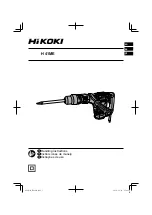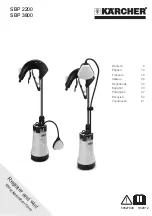
2. The power supply's components, including the smoothing capacitors, should be rated at a
high enough working voltage to handle the increased voltage across them.
3. The heatsink will need to dissipate even more energy because of the greater voltage drop
across the regulators.
In the wiring diagram shown on page 17 I have included a suggested wiring method for
connecting up a mains transformer. Not all mains transformers are the same, some have
additional windings, others have tapped windings. I have simply used a single primary, double
secondary type for example only. Note that whatever type of transformer you use do not
connect any of the secondary wires to 0V1. 0V1 is provided for optional earthing purposes
only and should not carry any current from the transformer.
For the mains fuse you should use a 500mA anti-surge type. All wiring at mains potential
should be adequately insulated and protected from straying fingers.
There is no need to fit an AC standby switch since you will be fitting a proper mains power on
switch in series with the transformer primary coil. So you should link S1A to S1R, and S2S to
S2S, on the PCB.
Earthing
Remember it is up to you, the builder of the equipment, to make sure that your item is safe
and is built to the required safety standard in your country. These notes are only a guidance
and it is up to the reader to establish the exact obligations required in their own country.
It is essential that everything you build, that has both live mains inside and a metal case or
panels, has a safety earth fitted. UK legislation says that any metal panelling should be
adequately insulated, ie. double insulated, or connected to earth. Since making a double
insulated case is not practical you should ensure that any exposed metal parts be properly
earthed.
Firstly you need to ensure that the heatsink is earthed. Given its size and required air flow this
will certainly be an exposed piece of metal and thus should be earthed well. It should be
bonded to earth via a thick piece of wire back to the earth tang of the IEC power inlet or a
common earth bonding point.
The PSU board should be securely mounted (using all four mounting holes) onto the earthed
heatsink using appropriate screws and toothed washers. R13 on the power supply board
should be a wire link. This should ensure that the power supply ground (0V) is tied to earth.
R2 on each Dizzy is provided to join the Dizzy's earth pad to pin 3 of the power headers. Pin 3
carries the panel ground in an Oakley system although in a mixed MOTM system it will also
be the module ground, or 0V. To bond the panel ground to earth via a Dizzy board you should
make R2 a wire link and connect each Dizzy's earth pad back to the IEC socket or common
earth bonding point. Again use a thick piece of insulated wire to make the connection.
15





































